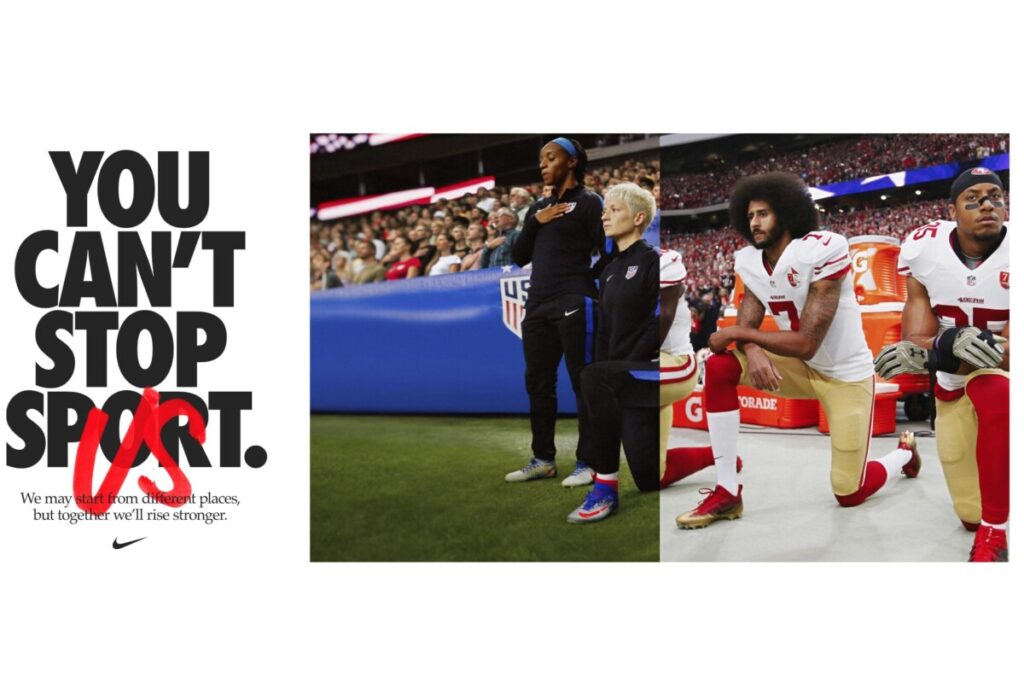- agglutinations of symbols
- What is a priori?
- What is the linguistic message?
- Denotational vs connotational
- What is the denotational message and how does it relate to language?
- anchorage vs relay
- How can we communicate the message without context in an image without captions?
Month: November 2020 (Page 3 of 4)
The first item to complete for November 11th is your second 2-3 page paper (See Assignment 10a).
Once this is completed there are two new readings for next week. The readings are essentially unrelated to the paper. It is recommended that you complete them after the paper. They are as follows:
Paul Rand, Good Design is Goodwill (1987): Rand_Goodwill
Denise Scott Brown, Steven Izenour & Robert Venturi, Learning from Las Vegas: The Forgotten Symbolism of Architectural Form (1972): Venturi_LasVegas
While there is not a response to these readings, you will be expected to respond verbally (or via Chat) in class on the 11th. Please budget your time so that you can give proper attention to these texts.
The second short paper is due next class, and there will also be two short texts to read. The texts are listed as 10b. Note that you do not need to submit a response to those texts.
PAPER
The second 2-3 page paper is a response to Roland Barthes’ Rhetoric of the Image. The objective for this paper is to analyze the rhetorical elements of a recent advertisement. Ideally, the ad should be from a print magazine.
The advertisement should use photographic imagery, and should include text. Begin by describing the image in as much detail as possible, examining the characteristics of the objects, models, environment, etc. pictured; and the layout, typography, interaction of picture elements, image quality and composition of the entire ad. Try to identify all of the signs at work in the image.
Make your best attempt to articulate the meaning of the image, using Barthes’ terms. What is the linguistic message? What are the non-coded iconic messages? What are the coded iconic messages? Identify the denotative and connotative aspects, the use of anchorage and relay, the semantic and lexical components, etc. Consider the effectiveness of the advertisers’ rhetoric, and the ideological metalanguage employed.
This response will be submitted as a 750-1000 word typewritten paper, double-spaced in 12 pt. Times New Roman. Include images of the advertisement under consideration and any other relevant illustrations. All references and quotations, including image sources should be properly cited in MLA format. Upload a PDF to a new Post on OpenLab before class on the 11th.
***NOTE: All Powerpoints, and chats from the past couple classes, have been added to the Class page of this site.***
Polysemy
Linguistic Sign
Connoted
Denoted
Syntagm
Diegesis
Dialectics
denotation
paradigmatic
asyndeton
The absence of code desintellectuazises the message because it seems to find in nature the signs of culture
At all events, the denoted image, to the extent to which it does not imply any code
Roland Barthes analyzes an advertising image. He uses the panzani brand ad to analyze and find the different messages that are conveyed.
There are three messages,
Linguistic, Connoted and Denoted
“If our reading is satisfactory, the photograph analyzed offers us three
messages: a linguistic message, a coded iconic message, and a non-coded
iconic message”
“Hence in every society various techniques are developed intended to fix the floating chain of signifieds in such a way as to counter the terror of uncertain signs; the linguistic message is one of these techniques.”
“At the level of the literal message, the text replies-in a more or
less direct, more or less partial manner – to the question: what is lf ? The text
helps to identify purely and simply the elements of the scene and the scene
itself; it is a matter of a denoted description of the image (a description
which is often incomplete) or, in Hjelmslev’s terminology, of an operation (as
opposed to connotation)”
“Another difficulty in analyzing connotation is that there is no particular analytical language corresponding to the particularity of its signifieds-how are the signifieds of connotation to be named?”
“When it comes to the “symbolic message,” the linguistic message no longer
guides identification but interpretation, constituting a kind of vise which
holds the connoted meanings from proliferating, whether towards excessively individual regions (it limits, that is to say, the projective power of the
image) or towards dysphoric values”
important key terms:
Etymology
Imitari
Semiology
Agglutination
Connotational
Quasi-tautological
Polysemy
Counter-taboo
Psuedo truth
Points I don’t completely follow:
The distinction between the literal message and the symbolic message is operational, we never encounter a literal image in its pure state.
by virtue of its absoluteiy analogical nature, seems to constitute a message without a code.
In other words, the denotation of the drawing is less pure than that
of the photograph, for there is no drawing without style.
Only the opposition of the cultural code and the natural non-code can
At all events, the denoted image, to the extent to which it does not imply any code.
Questions I have about the reading:
What is this code that they repeat in the passage and what exactly does it have to do with the photograph and the text in the Ad?
…the intelligible is reputed antipathetic to lived experience.
Process of signification
Quasi-tautological
…true sign systems and a statement of quasi-identity.
Non-/coded iconic message
Hence, knowing that a system which takes over the signs of another system in order to make them its signifiers is a system of connotation,6 we may say immediately that the literal image is denoted and the symbolic image connoted. Successively, then, we shall look at the linguistic message, the denoted image, and the connoted image.
When it comes to the “symbolic message,” the linguistic message no longer guides identification but interpretation, constituting a kind of vise which holds the connoted meanings from proliferating, whether towards excessively individual regions (it limits, that is to say, the projective power of the image) or towards dysphoric values.
The text is indeed the creator’s (and hence society’s) right of inspection over the image; anchorage is a control, bearing a responsibility-in the face of the projective power of pictures – for the use of the message. With respect to the liberty of the signifieds of the image, the text has thus a repressive value10 and we can see that it is at this level that the morality and ideology of a society are above all invested.
Then again (and there is no contradiction with what has just been said), it is a sufficient message, since it has at least one meaning at the level of the identification of the scene represented; the letter of the image corresponds in short to the first degree of intelligibility (below which the reader would perceive only lines, forms, and colors), but this intelligibility remains virtual by reason of its very poverty, for everyone from a real society always disposes of a knowledge superior to the merely anthropological and perceives more than just the letter.
Does the coding of the denoted message have consequences for the connoted message?
Spatial immediacy and temporal anteriority
The denoted image naturalizes the symbolic message, it innocents the semantic artifice of connotation.
The more technology develops the diffusion of information (and notably of images), the more it provides the means of masking the constructed meaning under the appearance of the given meaning.
The language of the image is not merely the totality of utterances emitted (for example at the level of the combiner of the signs or creator of the message), it is also the totality of utterances received:the language must include the “surprises” of meaning.
It can thus be seen that in the total system of the image the structural functions are polarized: on the one hand there is a sort of paradigmatic condensation at the level of the connotators (that is, broadly speaking, of the symbols), which are strong signs, scattered, “reified”; on the other a syntagmatic ‘flow’ at the level of the denotation-it will not be forgotten that the syntagm is always very close to speech, and it is indeed the iconic “discourse” which naturalizes its symbols.
“You Can’t Stop Us” Nike Campaign
Klarna Inclusivity Ads


Klarna ‘Shop Like a Queen’
Woman “Run It All” Athleta Campaign

As technology progress, the forms in which we intake and relay media have as well. With each new medium, there are underlying consequences to its use. For despite the most innocent intentions are sill intentions none-the-less. How we choose to advocate any message will garner not only a response but a reaction. What we do with what we have is a message within and of itself. As Marshall McLuhan explains, the development and advancement of automobiles were made with the intention of travel, however, the consequences of Automation stealing jobs were the consequences. The car was the medium of the message. It can also be said that because Cars are an extension of us, Of our functions as a core, that there is more emphasis on consequence; it is more personal. The best example of this is Light and light bulb. The light bulb is merely an extension of man, that being our eyes. The development of the light bulb is an enhancement with many practical uses that extend beyond the reach of man. How said light bulb is used is neither here nor there, yet why it is used is more prominent. Similar to that of money, money itself has in turn become an extension of human value, be it used for food or living. When questioning why it’s used it then takes on meaning. It is the medium of a revolution, not an economy, or international affairs. It, the medium, retains this message as the answer to a “why”.





Recent Comments